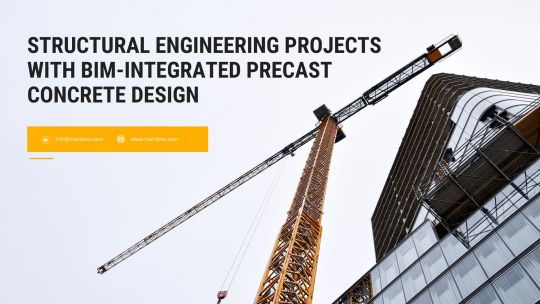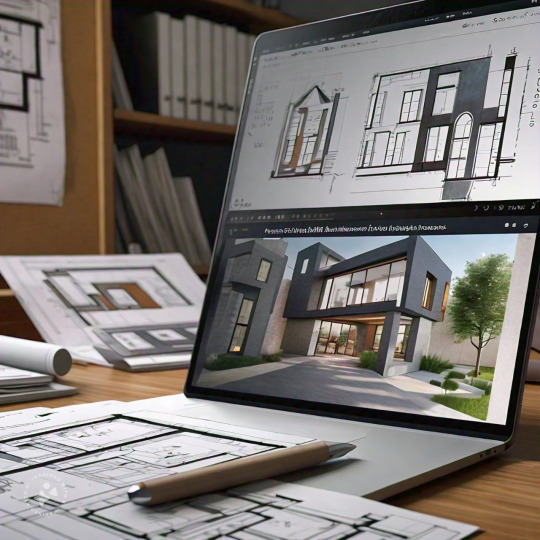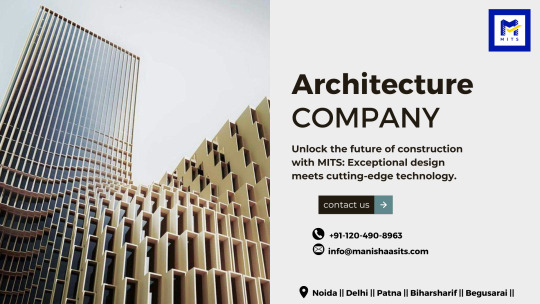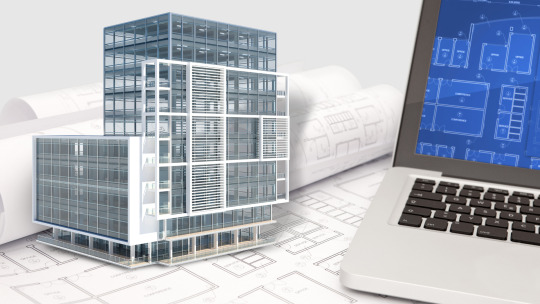#BIM workflows
Explore tagged Tumblr posts
Text
BIM Software Solutions for Modern HVAC Applications
As the HVAC industry continues to evolve in 2025, Building Information Modeling (BIM) has become an indispensable tool for professionals seeking to optimize design, installation, and maintenance processes. For HVAC engineers, contractors, and technicians, selecting the right BIM software can significantly impact project efficiency and outcomes. Let’s explore the most effective BIM solutions for…
#3D modeling#augmented reality#Autodesk Revit#automation#Bentley AECOsim#BIM#BIM workflows#building information modeling#Building performance#building systems#clash detection#cloud collaboration#cooling loads#decision matrix#digital twin#duct design#energy analysis#Energy efficiency#fabrication documentation#Graphisoft ArchiCAD#heating loads#hvac#HVAC design software#HVAC engineering#interoperability#mechanical engineering#mechanical systems#MEP#MEP coordination#mixed reality
0 notes
Text
Boost BIM Efficiency with Revit Dynamo
Revit Dynamo enhances BIM workflows by providing a powerful visual programming interface that allows users to automate repetitive tasks, optimize designs, and manage data more efficiently. With Dynamo, complex geometries can be created, and design alternatives can be explored quickly through parametric modeling. It also enables seamless clash detection and resolution, improving coordination among architectural, structural, and MEP elements. Custom tools can be developed to meet specific project needs, and interoperability with other software platforms ensures smooth data exchange. By integrating Dynamo into BIM processes, AEC professionals can achieve higher accuracy, efficiency, and innovation in their projects.
0 notes
Link
0 notes
Text
"How SketchUp Pro Enhances Engineering & Architecture Workflow | PI Software"
"Learn how SketchUp Pro improves engineering and architectural workflows with precise modeling, seamless integrations, and efficient design processes. Discover its benefits for professionals."
#SketchUp Pro#Architecture Software#Engineering Design#3D Modeling#CAD Software#Design Workflow#Building Information Modeling (BIM)#Construction Technology#Architectural Visualization#Digital Design Tools#Engineering Workflow#Structural Design
0 notes
Text
Structural Engineering Projects with BIM-Integrated Precast Concrete Design
Discover the future of construction with BIM-Integrated Precast Concrete Design! This innovative approach revolutionizes how we plan and execute structural engineering projects. By integrating Building Information Modeling (BIM) with precast concrete, we achieve unparalleled precision, efficiency, and sustainability. Say goodbye to traditional methods and embrace a smarter, more streamlined process that saves time and reduces costs.
Join the movement towards modern construction excellence! BIM-Integrated Precast Concrete Design not only enhances collaboration among project stakeholders but also ensures higher quality and consistency in every build. From concept to completion, experience the benefits of cutting-edge technology in your structural engineering projects. Let's build the future together! 🏗️✨

#precast CAD drawings#precast concrete design#precast concrete design workflow#precast constructions using BIM software#precast engineering design
0 notes
Text
Elevate Projects with Expert Scan to BIM Services: nCircle Tech
Revolutionize your construction projects with Scan to BIM Workflow insights! Explore the latest techniques and best practices for seamlessly converting laser scans into Building Information Models. Join our podcast for expert guidance and real-world case studies. Tune in now and elevate your BIM game!
0 notes
Text
Architectural 2D CAD Drafting & Design Services: Ensuring Precision and Quality
Architectural 2D CAD Drafting
Architectural 2D CAD drafting is the backbone of modern design workflows, offering precise and detailed technical drawings for projects of all scales. Whether it’s floor plans, elevations, or technical drawings, Architectural 2D CAD Drafting & Design Services ensure every detail is accurately represented, eliminating errors and streamlining construction processes.
With advanced tools like AutoCAD and Revit, these services allow architects, engineers, and contractors to work collaboratively, achieving precision and efficiency in their designs.

Importance of 2D CAD Drafting in Modern Architecture
2D CAD drafting services have become an integral part of architectural workflows, helping professionals overcome traditional design challenges. Here's why they are indispensable in modern architecture:
Precision: Every detail, from measurements to layouts, is highly accurate.
Collaboration: CAD files are easily shareable, ensuring all stakeholders are aligned.
Efficiency: Compared to manual drafting, CAD tools significantly reduce the time required to produce drawings.
By integrating 2D drafting and 3D BIM Modeling Services, architects and engineers can move seamlessly from conceptual design to execution while maintaining accuracy and consistency.
Benefits of 2D CAD Drafting for Professionals
For architects, engineers, and contractors, architectural 2D drafting offers numerous benefits, including:
Enhanced PrecisionAccurate drafting reduces errors during construction, ensuring smooth project execution.
Streamlined WorkflowWith 2D drafting and Architectural Design Visualization Services, teams can transition from design to documentation more effectively.
Cost EfficiencyOutsourcing 2D CAD drafting services reduces overhead costs, as there’s no need for maintaining an in-house drafting team.
Flexibility and ScalabilityProjects often require revisions and updates. CAD drafting ensures that modifications are quick and hassle-free without disrupting the entire workflow.
Professionals across industries leverage these benefits to optimize their design and construction processes.
Applications of 2D CAD Drafting
Architectural 2D drafting services have a wide range of applications in design and construction, including:
Floor Plans: Clearly defined layouts for residential, commercial, and industrial buildings.
Elevations: Detailed visual representations of exterior facades for presentations and approvals.
Technical Drawings: Accurate documentation that provides contractors and engineers with essential construction details.
To cater to complex design needs, Architectural CAD Design and Drafting Services provide tailored solutions for architects and engineers, enabling seamless integration of technical precision with creative concepts.
Industries Benefiting from 2D CAD Drafting
Several industries rely on architectural 2D CAD drafting services for achieving project success. Here’s a closer look:
ConstructionPrecise drafting reduces on-site errors, saving time and money during construction. Contractors depend on 2D drafting for creating accurate blueprints.
Interior DesignInterior designers use CAD drafting to create detailed layouts for furniture placement, lighting design, and more.
Real EstateReal estate developers benefit from professional drafting services to create detailed property layouts for presentations and marketing materials.
By relying on Architectural Documentation Services, these industries achieve precision, professionalism, and timely project delivery.
Leveraging Professional CAD Drafting Services
Outsourcing 2D CAD drafting services to experienced professionals can significantly optimize project outcomes. Here’s how:
Expertise: Professional drafters bring years of experience in handling complex drafting requirements.
Cost Savings: Avoid the expenses of maintaining in-house resources by outsourcing CAD drafting tasks.
Scalability: Services are tailored to meet specific project needs, ensuring flexibility and adaptability.
By leveraging Paper to CAD Conversion Services, architects, engineers, and contractors can focus on core project responsibilities while ensuring that designs are accurate and construction-ready.
Conclusion
Architectural 2D CAD drafting services are indispensable for achieving precision, efficiency, and collaboration in modern design projects. From floor plans to elevations and technical drawings, these services provide a solid foundation for successful project execution.
If you're looking to enhance your project outcomes with professional drafting services, get in touch today to see how we can help bring your vision to life.
2 notes
·
View notes
Text
From 2D to BIM: Upgrading Your Architectural Design Process
Are you still stuck in the 2D era?
Upgrade your architectural design process to the cutting-edge technology of Building Information Modelling (BIM). This game-changing innovation is transforming the architecture industry, and it's time to join the revolution.
The Limitations of 2D Design
Traditional 2D architectural design has served us well, but it's time to acknowledge its constraints. 2D designs lack the depth and detail required for modern construction projects. if it's fail to provide a comprehensive understanding of the building's components, leading to errors, miscommunications, and costly rework.
Lack of Clarity: 2D designs can be ambiguous, leading to misunderstandings and misinterpretations.
Inadequate Visualization: 2D designs struggle to convey complex spatial relationships and design intent.
Inefficient Collaboration: 2D designs make it challenging for stakeholders to collaborate and communicate effectively.
Error-Prone: 2D designs are more susceptible to human error, leading to costly rework and delays.

Enter BIM: The Future of Architectural Design
BIM is more than just a design tool – it's a collaborative platform that unifies architecture, engineering, and construction professionals. With BIM, you can create detailed, data-rich models that simulate real-world performance. This revolutionary technology enables:
Improved Collaboration: Stakeholders can access and contribute to the design process in real-time, ensuring everyone is on the same page.
Enhanced Visualization: 3D models and simulations facilitate better understanding and communication, reducing errors and miscommunications.
Increased Accuracy: Automated clash detection and interference checking minimize errors, ensuring a more efficient design process.
Efficient Project Management: Real-time tracking and analysis streamline the construction process, reducing delays and cost overruns.
Seamless Transition with Architectural BIM Services
Upgrading to BIM doesn't mean starting from scratch. Our expert Architectural BIM Services will guide you through a seamless transition, leveraging your existing designs to create rich, data-driven models. Our comprehensive services include:
Architectural BIM Modeling: Transforming 2D designs into detailed, interactive 3D models, enabling enhanced visualization and collaboration.
Architecture CAD Drawing: Converting traditional CAD files into BIM-compatible formats, ensuring a smooth transition.
Architectural 3D Modeling Services: Creating immersive, photorealistic visualizations, enhancing design communication and stakeholder engagement.
Architectural 3D Rendering Services: Generating stunning, high-resolution images and animations, perfect for marketing and presentation purposes.
Benefits of BIM
Enhanced Creativity: Explore new design possibilities with data-driven models, unlocking innovative solutions.
Improved Productivity: Streamline your workflow with automated processes, reducing design time and costs.
Increased Competitiveness: Stand out with cutting-edge technology and innovative solutions, attracting clients and projects.
Better Decision-Making: Data-driven models enable informed decisions, reducing risks and improving project outcomes.
Sustainability: BIM facilitates sustainable design, reducing environmental impact and promoting green building practices.
Implementing BIM in Your Practice
Upgrading to BIM requires a strategic approach. Here's a step-by-step guide to ensure a smooth transition:
Assess Your Current Workflow: Identify areas for improvement and determine the best approach for your practice.
Choose the Right BIM Software: Select a software that aligns with your needs and skill level.
Train Your Team: Invest in comprehensive training to ensure a seamless transition.
Develop a BIM Execution Plan: Establish clear goals, processes, and standards for your BIM implementation.
Start Small: Begin with a pilot project to test and refine your BIM workflow.
The architectural design process is evolving, and BIM is leading the charge. Don't let outdated design processes hold you back. Embrace the future of architecture with our expert BIM services. Discover the advantages of enhanced creativity, improved productivity, and increased competitiveness. Join the BIM revolution today and transform your architectural design process. Contact us to learn more about our Architecture BIM Services and take the first step towards a more efficient, collaborative, and innovative future.
#architecture#interiors#bim#construction#autocad#architectdesign#architecturalbimservices#modern architecture
2 notes
·
View notes
Text
Mastering AutoCAD: A Comprehensive Guide to Advanced Design Challenges

In the dynamic realm of design and drafting, the mastery of AutoCAD stands as a cornerstone skill for individuals aspiring to excel in fields such as engineering, architecture, and design. As students embark on their academic journey toward a Master's degree, they are met with a series of intricate challenges that extend beyond routine tasks, pushing the boundaries of their technical expertise. These challenges not only serve as assessments of their proficiency in AutoCAD but also require a strategic and innovative mindset to navigate complex problem-solving scenarios. This blog aims to delve into the intricacies of five master's degree level questions in AutoCAD, unraveling the layers of complexity inherent in the world of computer-aided design and providing valuable insights for those navigating this educational landscape.
The pursuit of excellence in AutoCAD at the master's degree level demands a holistic understanding of the software's capabilities, creative problem-solving skills, and a willingness to seek assistance when faced with intricate challenges. Help with AutoCAD assignments becomes not just a keyword but a beacon guiding students through the complexities of advanced design tasks, fostering a learning environment where theoretical knowledge meets practical application, ultimately preparing them for success in the ever-evolving field of computer-aided design.
1. Advanced 3D Modeling in AutoCAD
Problem: The challenge begins with designing a complex 3D model incorporating diverse geometric shapes. The solution not only involves creating intricate shapes but also optimizing the model for efficient rendering. This question delves into not just the technical aspects of modeling but also strategic considerations for a seamless design process.
2. Dynamic Blocks and Parametric Design
Problem: Dynamic blocks and parametric design are at the forefront of modern CAD practices. Creating a parametrically controlled dynamic block for a furniture component challenges students to think beyond static designs. The solution involves understanding the dynamic properties, establishing relationships between parameters, and discussing the advantages of dynamic blocks in real-world design workflows.
3. AutoCAD Customization with AutoLISP
Problem: AutoLISP programming is a powerful tool for customization in AutoCAD. Crafting a custom command or routine to streamline a specific design task showcases not only programming skills but also the practical application of customization in a professional setting. The solution includes providing the complete AutoLISP code, explaining its functionality, and discussing its impact on workflow efficiency.
4. Collaborative Design in AutoCAD
Problem: Collaborative design is a crucial aspect of many projects. This question challenges students to create a multi-user environment in AutoCAD, emphasizing features like "Xref," "Sheet Sets," or "CAD Standards" to streamline collaboration. The solution addresses challenges in coordinating design changes, managing references, and ensuring consistency across the project.
5. AutoCAD and BIM Integration
Problem: The integration of AutoCAD into a Building Information Modeling (BIM) workflow is a contemporary challenge. Students are tasked with showcasing the interoperability of AutoCAD with BIM tools and discussing the advantages of this integration. This question highlights the importance of understanding how AutoCAD fits into broader design and construction processes.
Help with AutoCAD Assignments: Navigating the Complexity
Undoubtedly, mastering AutoCAD requires a combination of theoretical knowledge and practical application. As students grapple with these challenging questions, seeking help with AutoCAD assignments becomes crucial. Understanding the nuances of each problem and refining one's skills often involves guidance from experts in the field.
Whether it's elucidating the intricacies of 3D modeling, unraveling the mysteries of AutoLISP programming, or addressing the challenges of collaborative design, a reliable source of assistance can make a significant difference. For those seeking help with AutoCAD assignments, various online platforms and professional tutors offer personalized guidance to ensure a deeper understanding of the subject matter.
In conclusion, tackling master's degree level AutoCAD questions goes beyond routine design tasks. It requires a holistic understanding of the software's capabilities, strategic thinking, and the ability to adapt to modern design practices. As students navigate these challenges, seeking assistance not only enhances their learning experience but also sets the foundation for a successful career in the dynamic world of computer-aided design.
#Autocad Assignment Help#Autocad Assignment Helper#Help with Autocad Assignments#Do My Autocad Assignment#Complete My Autocad Assignment
8 notes
·
View notes
Text

BIM Careers: Building Your Future in the Digital AEC Arena
The construction industry is undergoing a digital revolution, and BIM (Building Information Modeling) is at the forefront. It's no longer just a fancy 3D modeling tool; BIM is a collaborative platform that integrates data-rich models with workflows across the entire building lifecycle. This translates to exciting career opportunities for those who can harness the power of BIM.
Are you ready to step into the octagon of the digital construction arena? (Yes, we're keeping the fighting metaphor alive!) Here's a breakdown of the in-demand skills, salary ranges, and future prospects for BIM professionals:
The In-Demand Skillset: Your BIM Arsenal
Think of your BIM skills as your tools in the digital construction toolbox. Here are the top weapons you'll need:
BIM Software Proficiency: Mastering software like Revit, ArchiCAD, or Navisworks is crucial. Understanding their functionalities allows you to create, manipulate, and analyze BIM models.
Building Science Fundamentals: A solid grasp of architectural, structural, and MEP (mechanical, electrical, and plumbing) principles is essential for creating BIM models that reflect real-world construction realities.
Collaboration & Communication: BIM thrives on teamwork. The ability to collaborate effectively with architects, engineers, and other stakeholders is paramount.
Data Management & Analysis: BIM models are data-rich. Being adept at data extraction, analysis, and interpretation unlocks the true potential of BIM for informed decision-making.
Problem-Solving & Critical Thinking: BIM projects are complex. The ability to identify and solve problems creatively, while thinking critically about the design and construction process, is invaluable.
Salary Showdown: The BIM Payday Punch
Now, let's talk about the real knock-out factor – salaries! According to Indeed, BIM professionals in the US can expect an average annual salary of around $85,000. This number can vary depending on experience, location, and specific BIM expertise. Entry-level BIM roles might start around $60,000, while BIM Managers and BIM Specialists with extensive experience can command salaries exceeding $100,000.
Future Forecast: A Bright BIM Horizon
The future of BIM is bright. The global BIM market is projected to reach a staggering $8.8 billion by 2025 (Grand View Research). This translates to a continuous rise in demand for skilled BIM professionals. Here are some exciting trends shaping the future of BIM careers:
BIM for Specialty Trades: BIM is no longer just for architects and engineers. We'll see increased adoption by specialty trades like HVAC technicians and fire protection specialists.
Integration with AI and Machine Learning: Imagine BIM models that can predict potential issues or suggest optimal design solutions. AI and machine learning will revolutionize BIM capabilities.
VR and AR for Enhanced Collaboration: Virtual Reality (VR) and Augmented Reality (AR) will allow for immersive BIM model walkthroughs, facilitating better collaboration and design communication.
Ready to Join the BIM Revolution?
The BIM landscape offers a dynamic and rewarding career path for those with the right skills. If you're passionate about technology, construction, and shaping the future of the built environment, then BIM might be your perfect career match. So, hone your skills, embrace the digital revolution, and step into the exciting world of BIM with Capstone Engineering!
#tumblr blogs#bim#careers#buildings#bim consulting services#bim consultants#construction#aec#architecture#3d modeling#bim coordination#consulting#3d model#bimclashdetectionservices#engineering#MEP engineers#building information modeling#oil and gas#manufacturing#virtual reality#collaboration#bim services#uaejobs
2 notes
·
View notes
Text

BUILDING THE FUTURE: HOW MITS LEVERAGES TECHNOLOGY FOR EXCEPTIONAL DESIGN AND CONSTRUCTION ?
MITS, a leading construction company in Noida, dives into the world of 3D modeling, BIM, and other cutting-edge advancements to revolutionize design, construction, and project management. Discover how MITS builds smarter, not just harder.Building on a Legacy of Excellence
At MITS, a premier construction company in Noida, we're passionate about exceeding expectations. We believe that the key to achieving exceptional results lies in embracing innovation. That's why we leverage the power of technology throughout every stage of the construction process, from initial design to final project delivery.
Revolutionizing Design with 3D Modeling and 3D Architecture
Gone are the days of flat, two-dimensional blueprints. MITS utilizes advanced 3D modeling software to create comprehensive, digital representations of your project. Imagine a virtual walk-through of your future building, allowing you to visualize spaces, layouts, and design details with unparalleled clarity. This collaborative approach empowers you to make informed decisions early on, minimizing the risk of costly changes later.
Enhanced Collaboration and Efficiency with BIM
Building Information Modeling (BIM) is at the heart of MITS' technological advantage. BIM goes beyond 3D modeling by integrating critical project data into the model itself. This includes information on materials, specifications, costs, and even scheduling. Imagine a single, intelligent model that serves as the central hub for all project stakeholders – architects, engineers, contractors, and you, the client. With BIM, everyone works from the same source of truth, fostering seamless collaboration, improved communication, and reduced errors.
Optimizing Project Management with Advanced Technology
The benefits of technology extend far beyond design. MITS utilizes project management software that streamlines workflows, automates tasks, and provides real-time project insights. Imagine having instant access to project schedules, budgets, and resource allocation at your fingertips. This level of transparency allows for proactive decision-making, efficient resource utilization, and the ability to identify and address potential issues before they escalate.
Beyond 3D Modeling and BIM: Embracing the Future
At MITS, we're constantly exploring the potential of new technologies. We are actively integrating virtual reality (VR) into our design process, allowing for even more immersive client experiences. Additionally, we are investigating the possibilities of drone technology for enhanced site surveying and progress monitoring.
Building a Better Tomorrow with Technology
By harnessing the power of 3D modeling, BIM, and other advancements, MITS delivers exceptional construction experiences for our clients. Our commitment to technology translates to:
Enhanced Design Quality: 3D visualization and BIM enable us to create more efficient, functional, and aesthetically pleasing designs.
Improved Project Efficiency: Integrated technologies streamline communication, minimize errors, and optimize resource allocation.
Reduced Costs and Risks: Proactive problem-solving and early decision-making lead to cost savings and reduced project risks.
Increased Client Satisfaction: Transparency, collaboration, and real-time project updates foster a positive and trusted client experience.
At MITS, we believe that the future of construction is built on a foundation of innovation. By embracing technology, we are building smarter, not just harder, to deliver exceptional results for our clients and shape a brighter future for Noida's architectural landscape.
#construction#constructioncompany#Noida#3dmodeling#3darchitecture#BIM#projectmanagement#bestconstructioncompany#constructiontechnology#innovation#architecture#design#constructioncompanyinNoida#MITS#explore
3 notes
·
View notes
Text
What is BIM Architectural outsourcing & Drafting Services?
BIM Architectural Services refer to the practice of subcontracting architectural design and drafting tasks to external firms or professionals specializing in Building Information Modeling (BIM). In this arrangement, architectural firms or companies outsource certain aspects of their projects, such as creating detailed drawings, 3D modeling, or BIM coordination, to specialized service providers.
Outsourcing BIM architectural drafting services offers several benefits to architectural firms:
Cost Efficiency: Outsourcing allows firms to access skilled professionals at a lower cost compared to hiring in-house staff. This can result in significant cost savings, especially for projects with fluctuating workloads or specialized requirements.
Expertise and Specialization: BIM outsourcing firms often have a team of experienced professionals with expertise in architectural drafting and BIM technologies. By leveraging their specialized skills, architectural firms can ensure high-quality deliverables and efficient project execution.
Focus on Core Competencies: Outsourcing non-core tasks such as drafting allows architectural firms to focus on their core competencies, such as design creativity, client relationships, and project management. This can lead to improved productivity and better utilization of resources.
Scalability and Flexibility: Outsourcing provides architectural firms with the flexibility to scale their workforce up or down based on project requirements. This agility enables firms to handle peak workloads, meet tight deadlines, and adapt to changing market demands more effectively.
Access to Advanced Technologies: BIM outsourcing firms often invest in the latest BIM software and technologies to deliver innovative solutions to their clients. By partnering with these firms, architectural companies can leverage cutting-edge tools and workflows without investing in expensive software licenses or training.
Overall, BIM architectural outsourcing and drafting services enable architectural firms to enhance their competitiveness, improve project efficiency, and deliver high-quality designs to their clients. By partnering with experienced outsourcing providers, architectural firms can streamline their workflows, reduce overhead costs, and focus on delivering exceptional architectural solutions.
United-BIM Inc. is a certified SBE/MBE BIM Modeling Services Company based in East Hartford, Connecticut. Our services include BIM Architectural Services, Architectural Drafting Services, 3D Rendering Services Structural Modeling and Detailing (Rebar, Precast, others), MEP-FP Modeling and Detailing, BIM Coordination & Clash Detection Services, Revit Family Creation Services, Underground Utility Locating Services, On-site & off-site Coordination Services, Onsite & virtual meetings participation, Point Cloud Scan to BIM, CAD to BIM Services, BIM for Facility Management, Accurate Shop Drawings Creation, As-built Drawings Services, Electrical Design Services & more.
1 note
·
View note
Text

Gsource Technologies stands at the forefront of cutting-edge technology, offering Scan to BIM services that redefine precision and efficiency. Specializing in 3D Laser Scanning, the company seamlessly transforms intricate CAD drawings into detailed Building Information Models (BIM).
This transformative process not only enhances accuracy but also streamlines project workflows. Gsource goes beyond the conventional, creating a comprehensive 3D model that encapsulates the essence of architectural and engineering intricacies. Their commitment to excellence ensures that clients receive unparalleled Scan to BIM solutions, facilitating seamless integration and collaboration. Elevate your project with Gsource Technologies, where innovation converges with expertise for a truly dynamic digital transformation.
#gsourcetechnologies#architecturedesigns#engineeringdesigns#caddrafting#bimservices#bimsolutions#bim3dmodel
2 notes
·
View notes
Text
Constructing Excellence: How 3D Engineering Applications Revolutionize Workflow Management

In the realm of construction, efficiency, accuracy, and collaboration are key factors that determine the success of a project. Traditional methods of construction management often involve intricate paper-based plans, complex communication channels, and a higher probability of errors. However, with the advent of 3D engineering applications, the construction industry has witnessed a transformative shift towards more streamlined and effective workflow management.
The Evolution of Construction Workflow Management
Historically, construction projects were managed through manual processes that relied heavily on physical drawings, blueprints, and handwritten documents. This approach often led to miscommunications, discrepancies between design and execution, and delays in project completion. As technology progressed, Computer-Aided Design (CAD) systems revolutionized the way designs were created and shared, but the inherent two-dimensionality still posed limitations in visualizing complex structures accurately.
Enter 3D engineering applications. These sophisticated software solutions allow architects, engineers, contractors, and other stakeholders to create, collaborate on, and manage construction projects in a three-dimensional virtual environment. This technology leverages Building Information Modeling (BIM), a process that integrates 3D geometry, spatial relationships, geographic information, and building component data into a comprehensive digital representation of the project.
Benefits of 3D Engineering Applications in Construction Workflow Management
1. Enhanced Visualization
3D models offer a more accurate and comprehensive visualization of the project, enabling stakeholders to understand the design intent more effectively. This visualization aids in identifying potential clashes, interferences, and design flaws before the construction phase, saving time and resources.
2. Improved Collaboration
3D engineering applications facilitate enhanced collaboration among project stakeholders. Design teams, architects, engineers, contractors, and clients can access the same model, providing a shared platform for discussion, feedback, and decision-making. Real-time collaboration reduces errors and minimizes delays caused by miscommunications.
3. Clash Detection and Conflict Resolution
One of the significant advantages of 3D engineering applications is automated clash detection. These applications identify clashes between different building systems (e.g., mechanical, electrical, plumbing) and structural elements early in the design phase, allowing teams to address conflicts before they manifest in the field.
4. Efficient Construction Planning
3D models provide an accurate representation of the project, enabling construction teams to plan and sequence tasks more effectively. This leads to optimized construction workflows, reduced downtime, and increased efficiency on the job site.
5. Resource Allocation and Budgeting
With 3D engineering applications, project managers can accurately estimate the quantity of materials required, which helps in budgeting and resource allocation. This reduces the likelihood of overruns and unforeseen expenses.
6. Risk Mitigation
The ability to simulate construction processes and identify potential risks allows teams to develop strategies for risk mitigation. This proactive approach minimizes disruptions and ensures the safety of workers and the project itself.
7. Progress Tracking and Reporting
3D models can be used to track the progress of construction against the original design and schedule. This visual tracking provides a clear understanding of project milestones and helps in generating accurate reports for stakeholders.
8. Facility Management and Maintenance
After construction, the 3D model can be handed over to facility management teams. These teams can use the model to manage building operations, plan maintenance activities, and make informed decisions throughout the building's lifecycle.
Challenges and Implementation
While the benefits of 3D engineering applications are evident, their successful implementation requires addressing certain challenges:
1. Learning Curve: Adapting to new software and workflows can be challenging for construction professionals accustomed to traditional methods. Training and support are crucial to ensuring a smooth transition.
2. Data Management: Managing the large volume of data associated with 3D models requires robust data management systems and practices.
3. Software Integration: Integrating 3D engineering applications with other construction management software (e.g., project management, scheduling) is essential for seamless workflow management.
4. Hardware and Software Requirements: Running sophisticated 3D applications requires powerful hardware and software, which might necessitate investments.
5. Collaboration and Communication: Effective collaboration relies on strong communication practices. Establishing clear communication channels and protocols is vital.
Conclusion
3D engineering applications have revolutionized construction workflow management by providing accurate visualization, improved collaboration, clash detection, and enhanced planning capabilities. By embracing these technologies, the construction industry can significantly reduce errors, save time, optimize resource allocation, and mitigate risks. Despite challenges, the potential for increased efficiency, reduced costs, and improved project outcomes makes the integration of 3D engineering applications a compelling proposition for modern construction projects.
#3D Engineering Applications#BIM Applications#Construction Workflow#Construction Workflow Management#Computer-Aided Design (CAD)#Building Information Modeling (BIM)
0 notes
Text
Elevate Efficiency: Unleash the Power of CAD Workflow Automation
Navigate the Future of AEC with Scan to BIM Workflow Excellence. Join us to uncover essential techniques, software insights, and real-world case studies that empower you to transform point cloud scans into precise Building Information Models (BIM). Tune in now for the key to revolutionize your architectural, engineering, and construction projects.
0 notes
Text

"Revitalize your construction projects with our cutting-edge BIM services. Our team of experts will bring your designs to life, optimizing efficiency, reducing costs, and ensuring seamless collaboration. Say goodbye to delays and hello to streamlined workflows. Elevate your construction game with our top-notch 3d BIM services
#bim services#2d drafting services#autocad#realestate#constructioncompany#civil construction#civilengineering#bim technology#data entry#mep design#happy monday
2 notes
·
View notes